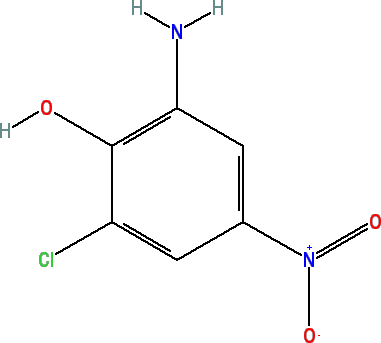2-Amino-6-Chloro-4-Nitrophenol
Safety Information
The safety of 2-Amino-6-Chloro-4-Nitrophenol and its hydrochloride salt has been assessed by the Cosmetic Ingredient Review (CIR) Expert Panel. The CIR Expert Panel evaluated the scientific data and concluded that 2-Amino-6-Chloro-4-Nitrophenol and its hydrochloride salt were safe for use in hair dye formulations at concentrations up to 2.0%.
CIR Safety Review: 2-Amino-6-Chloro-4-Nitrophenol was poorly absorbed through the skin. Less than 0.25% of 2-Amino-6-Chloro-4-Nitrophenol found in a nonoxidative hair dye was absorbed. Less than 0.2% of 2-Amino-6-Chloro-4-Nitrophenol found in an oxidative hair dye was absorbed. In subchronic oral studies, a no observable adverse effect level of 30 mg/kg/day for 2-Amino-6-Chloro-4-Nitrophenol was determined; at higher doses, increased organ weights were seen. A 2% solution of 2-Amino-6-Chloro-4-Nitrophenol applied under occlusive conditions was found to be non-irritating. At 0.1%, 2-Amino-6-Chloro-4- Nitrophenol was nonsensitizing; at 2%, there was sufficient skin coloration from the dye that assessment of sensitization was difficult; but no obviously sensitized areas were reported. An oral developmental toxicity study showed no birth defects. In one genotoxicity test in bacteria, Salmonella strains TA97, TA98, and TA100 showed an increase in mutations, with and without metabolic activation. Strain TA1535 was negative.
In another test in bacteria, Salmonella strains TA97 and TA100 showed no increase in mutations upon treatment with 2-Amino-6-Chloro-4-Nitrophenol, with and without metabolic activation. Strain TA98 was negative with metabolic activation but positive without activation. In follow-up testing with strain TA98-NR, there was no increase in mutations in the absence of activation. Mutagenicity assays in other systems were negative. The poor absorption through the skin, lack of any developmental effect, and negative mutagenesis data in certain bacterial test strains and in other systems suggested that any systemic effects from the use of actual products were unlikely. The CIR Expert Panel concluded that the highest concentration of 2-Amino-6-Chloro-4-Nitrophenol tested (2%) was safe for use in hair dye formulations.
More information about hair dye safety.
2-Amino-6-Chloro-4-Nitrophenol and its salts are listed in the Cosmetics Directive of the European Union (see Annex III) and may be used as oxidizing and non-oxidizing coloring agents for hair dyeing at maximum concentrations of 2% in the finished product, and a maximum concentration of 1% when mixed with hydrogen peroxide. Products containing these ingredients must be labeled as indicated in Annex III.
Link to the EU Cosmetic Regulation: http://europa.eu/legislation_summaries/consumers/product_labelling_and_packaging/co0013_en.htm
